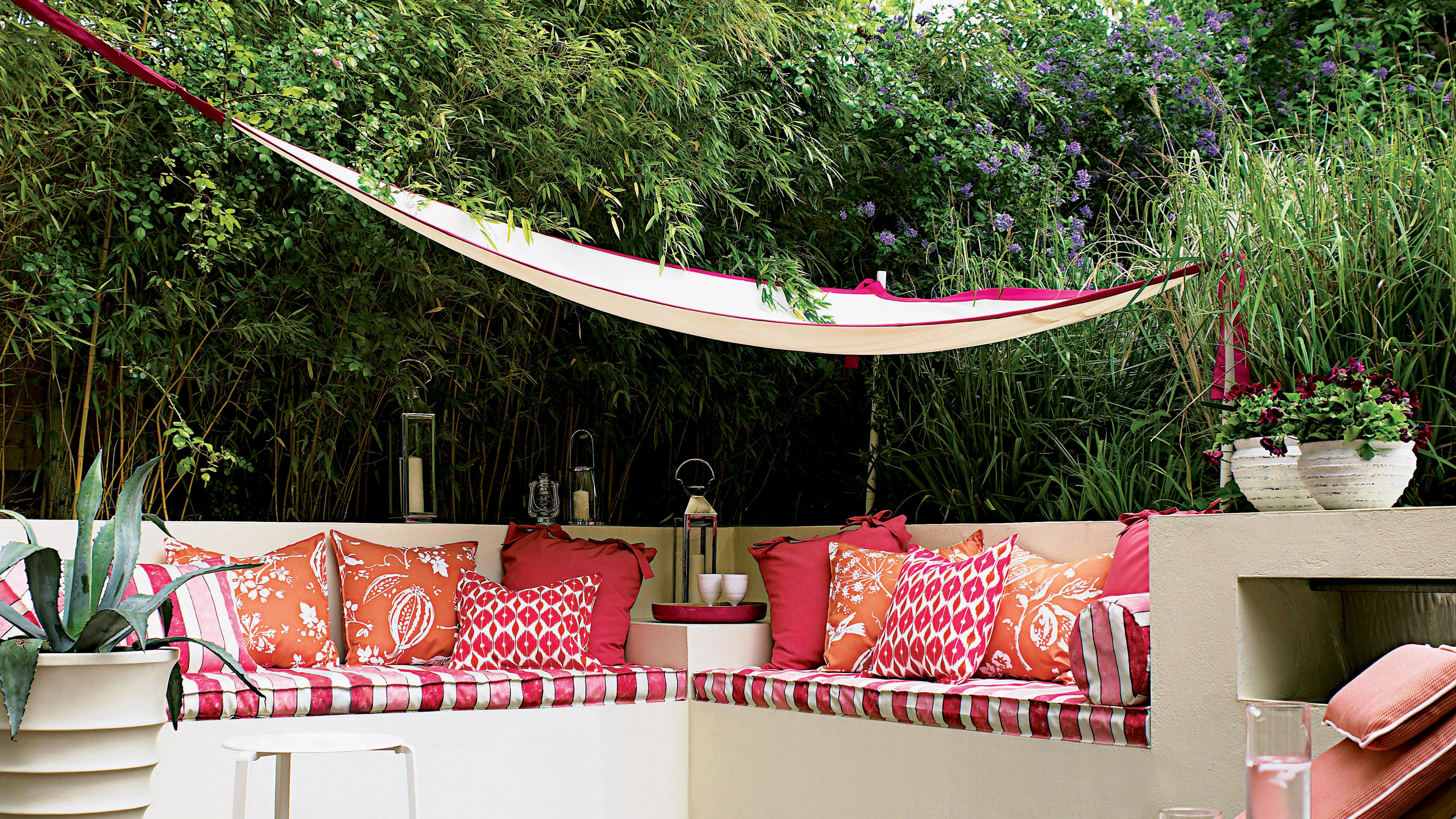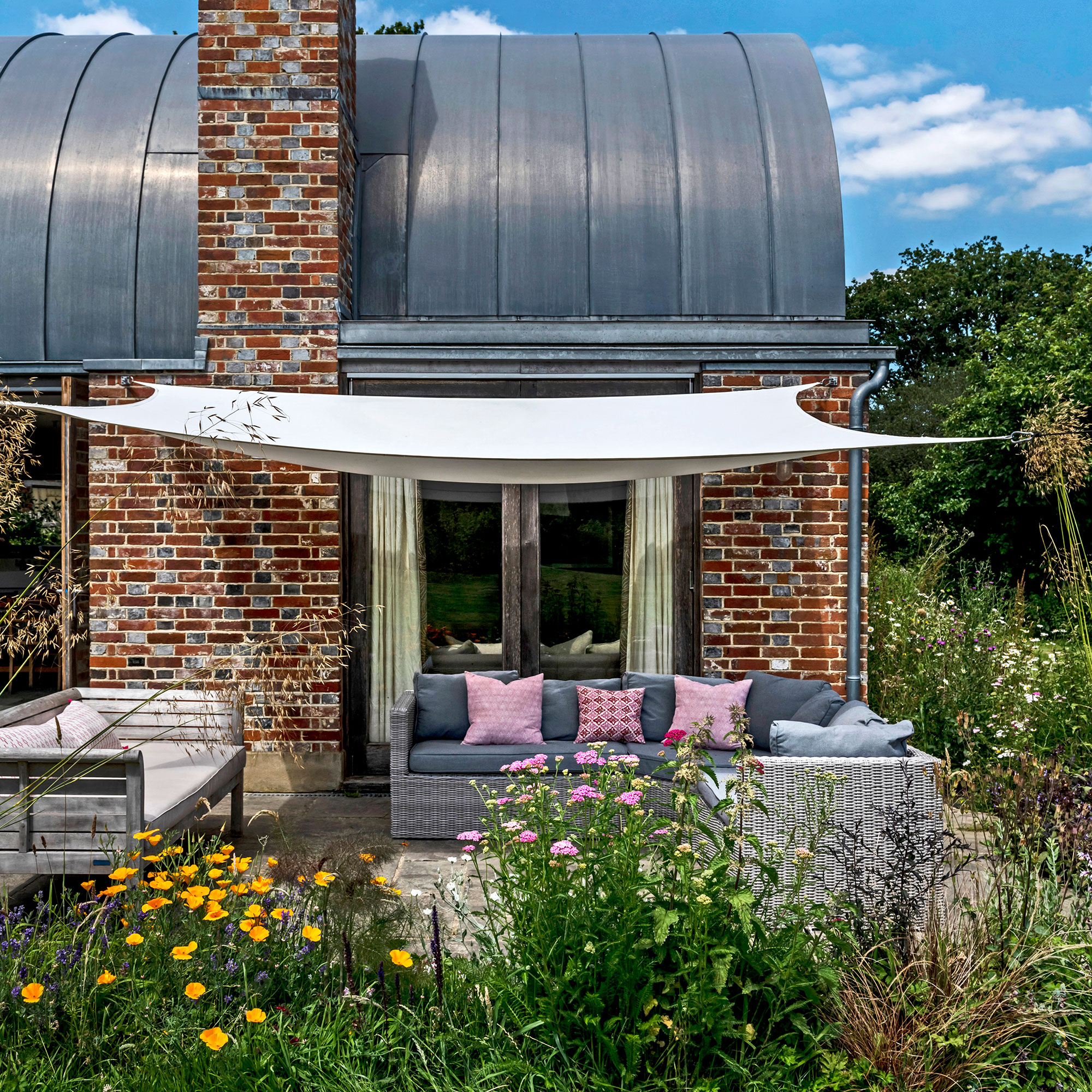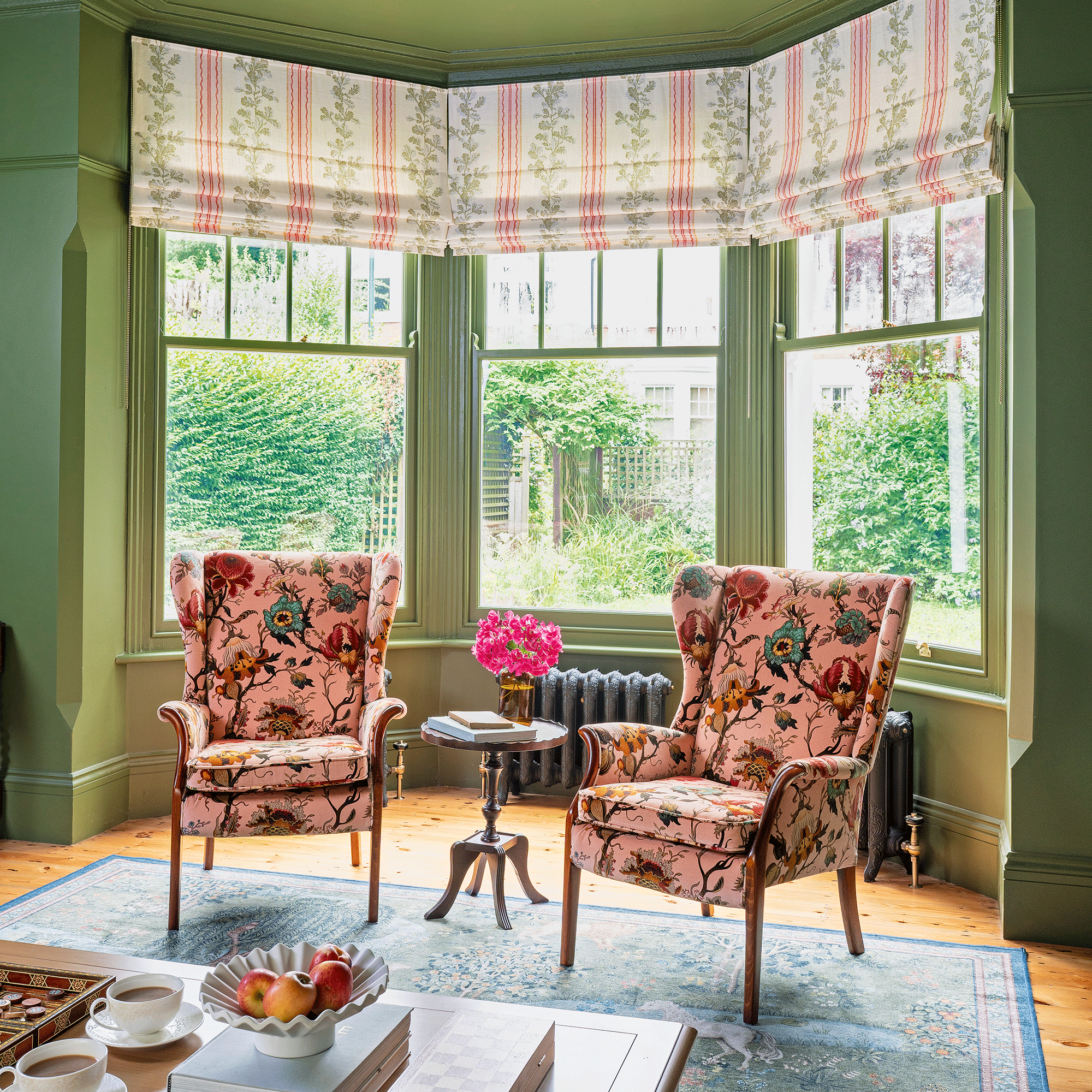6 things to consider before installing a shade sail in a garden - make sure you avoid any big mistakes
Looking for an alternative way to shelter your garden from the sun? Consider installing a shade sail for a nautical twist

Whether you are looking at things to consider when installing a shade sail, erecting a pergola or planting trees, garden shade is a vital element when it comes to planning a garden.
As temperatures warm up (fingers crossed) taking advantage of outdoor space is on everyone's minds, but as much as we enjoy the sunshine, shade is needed as protection from harmful UV rays and sweltering heat.
When researching garden shade ideas it's important to consider the type and size of garden you own, if you want to maximise on space a flat canopy otherwise known as a shade sail, may just hit the spot.
6 things to consider when installing a shade sail
A shade sail is a type of garden shade that is usually triangular, much like the design of a boat sail, that is most often suspended above a garden patio or terrace with rope.
As a shade and garden screening idea, a shade sail has pros and cons as some plots aren't compatible. So, we've asked garden and landscaping experts what things to consider when installing a shade sail.

1. Understand your garden look
A garden sail shade is arguably best suited to modern garden ideas as its angular lines and minimalist design blend well with urban spaces or city courtyards. So, if you are looking for cottage garden ideas, a pretty parasol or building a pergola will be a better fit.
'Shade sails look particularly sharp and stylish in urban and minimalist gardens, but they can look wrong in romantic country settings, as they are geometric and flat. A parasol looks best in the country, and can be moved around a space as the light changes,' explains Garden Designer Harriet Worsley, Worsley Design & Consultancy.
2. Select a practical position
When looking to put up a shade sail, it's best to consider the sun's path throughout the day. Ultimately, your sail shade is a source of shade so will need to be positioned wherever the sun hits in the afternoon to act as shelter for garden activities such as BBQs, alfresco dining or family events.
Sail shades are not easily manoeuvred so once fixed and secured they remain in place for the duration of the summer. If you're looking for a garden shade that can be relocated a large parasol may be more effective.
'Shade sails are less versatile as they have to be made to fit a specific terrace or garden space, and are fiddly to take up or down as the weather changes,' continues Harriet Worsley.

3. Sail shades need to be safely secured
A sail shade is a great budget garden idea as usually it's literally made from a large piece of canvas with holes at each corner for rope. However, this does mean that practical, sturdy and safe structures are needed to anchor it.
'The most important thing to remember is that they need a strong structure to attach to - metal or wooden poles, or the sides of a building - particularly if the site is windy,' continues Harriet.
'You might have existing structures such as a rear wall and outbuildings to utilise but, it's likely, you'll also need to insert extra fixing posts,' agrees Fiona Jenkins at myjobquote.co.uk.
4. Measure up
Sail shades can be bought in various sizes and made-to-measure bespoke, so it is important to measure the area you want the canopy to be anchored to make the sail shade safe. Ideally, there needs to be enough space to leave a small gap between the canvas and buildings.
'Accurately measure the area you want to cover in your garden, ensuring there’s enough space for the sail to be tensioned properly. It’s important to allow for a gap between the sail's edge and the mounting points to accommodate tensioning devices and ensure a taut fit,' explains Samantha Richards, garden gazebo expert at Gazeboshop

5. Tension is key
Knowing how far to stretch a sail shade is an important part of its function. The sail needs to be kept taught and installed at an angle. Otherwise, you may end up with a saggy sail bottom filled with a dangerous pool of water that could tear the fabric.
"It’s vital to secure the correct amount of tension to keep the sail taut and prevent any sagging. You can use turnbuckles and other tensioning devices to adjust the tension as needed, explains Samantha Richards.
"Also be sure to Install the sail at an angle to ensure efficient water runoff and reduce the risk of water pooling on the fabric. A slope of at least 30 degrees is often recommended for effective drainage."
6. Maintenance is a must
According to Tension, a commercial cover specialist, when cared for, a good-quality shade sail can last between 5 and 7 years.
Get into the habit of doing a routine inspection to check for wear and tear. Regularly check the tension to accommodate fabric stretching and environmental changes.
When installing, regularly check and maintain the tension to accommodate fabric stretch and any environmental changes.
'It’s important to look out for signs of rust or corrosion on metal components and replace any damaged parts as required,' says Samantha.
Clean the canvas as you would any other garden shade option, at regular intervals with mild soapy water.
'Be aware that if you install a shade under a tree there may be bird droppings, so consider something easy for to clean,' says Harriet Worsley.
To extend a sail shade lifespan, consider taking it down and putting it in cool dry storage out of season.

Where to buy a shade sail
- Amazon - You can pick up a shade sail with great reviews starting at £20
- Primrose - Easily choose from a range of different shapes and sizes, including Kookaburra shade sails
- B&Q - if you're on a tight budget you can pick up a small shade sail from £8
FAQs
Can I keep my garden sail shade up all year?
'During more extreme weather conditions or off-season periods, consider taking down the sail and storing it in a dry, cool place to extend its lifespan,' explains, Samantha Richards.
What's the best colour for a shade sail?
As sail shades are made of fabric and exposed to long periods of direct sunlight, we would suggest a neutral colour way to prevent colour fade.
However, vivid garden colours are a trend set to sore. 'They can look beautiful in bright colours against a backdrop of green foliage,' says Harriet Worsley.
'The growing popularity of bold, vibrant colours like purples and oranges shows we are feeling liberated and injecting more vibrancy into our gardens. After years of muted tones dominating, people seem to want to make more of a sunny, uplifting statement,' agrees Paige McCallum, Buyer at Homebase.
If you choose a brightly coloured sail shade it may only last one season.
Get the Ideal Home Newsletter
Sign up to our newsletter for style and decor inspiration, house makeovers, project advice and more.
Rachel Homer has been in the interiors publishing industry for over 15 years. Starting as a Style Assistant on Inspirations Magazine, she has since worked for some of the UK’s leading interiors magazines and websites. After starting a family, she moved from being a content editor at Idealhome.co.uk to be a digital freelancer and hasn’t looked back.
-
 A strict colour palette and vintage finds have turned this semi-detached Edwardian house into an elegant family home
A strict colour palette and vintage finds have turned this semi-detached Edwardian house into an elegant family homeSticking to a three-colour palette of green, pink and yellow and mixing in plenty of vintage furniture and art has created an authentic period feel
By Stephanie Smith
-
 A top-to-bottom renovation has turned this Edwardian house into a lovely family home
A top-to-bottom renovation has turned this Edwardian house into a lovely family homeWith a few considered structural changes, this period house has been turned into a family home and has created a sanctuary for years to come
By Maxine Brady
-
 How to heat a conservatory
How to heat a conservatory7 practical options to consider for year-round comfort
By Amy Reeves